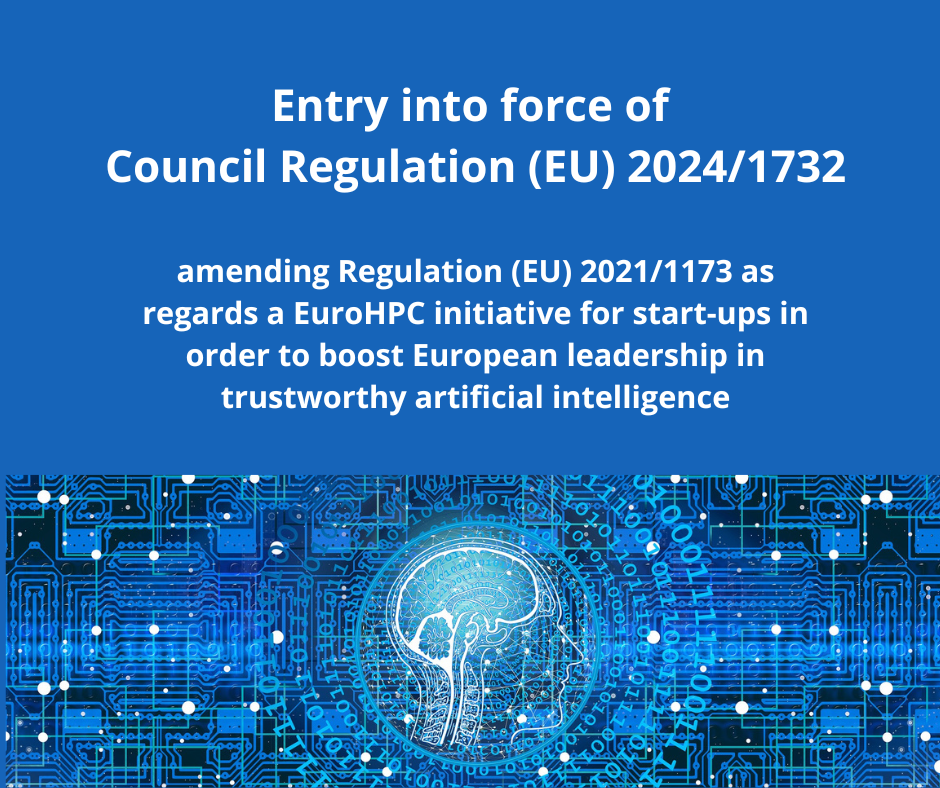
With this new pillar of activities now officially enshrined into its regulation, the EuroHPC Joint Undertaking will be able to acquire and operate dedicated AI-optimised supercomputers. This will involve procuring new machines but also upgrading some existing EuroHPC supercomputers with enhanced AI capabilities.
The Regulation also introduces the concept of ‘AI factories’ which aim to develop AI ecosystems centered around EuroHPC supercomputing facilities. The new action will support investments in AI-oriented supercomputing services to attract talent and support users specifically wishing to train AI models in Europe. The AI factories will serve a diverse range of European users including start-ups, SMEs, industry, academia and the public sector and contribute to the growth of a highly competitive and innovative AI ecosystem in Europe.
The Joint Undertaking will, in agreement with its Governing Board, now prepare to implement this new pillar of its regulation.
More info
- Council Regulation (EU) 2024/1732 of 17 June 2024 amending Regulation (EU) 2021/1173 as regards a EuroHPC initiative for start-ups in order to boost European leadership in trustworthy artificial intelligence
Background
In her 2023 State of the Union Address, President Ursula von der Leyen announced a new strategic initiative to make the European Union’s supercomputing capacity available to innovative European startups in trustworthy artificial intelligence (AI) to train their models. These models require substantial amounts of computing power to train the most advanced foundation models in order to unlock the full potential of AI, a requirement that can be met only with supercomputing.
On 24 January 2024, the European Commission proposed an amendment to the current regulation to introduce a new objective for the EuroHPC JU. The new mandate would foster the development of an AI ecosystem in the EU by establishing and managing AI factories.
On 17 June 2024, the Council officially adopted an amendment to the regulation on the EuroHPC JU expanding its objectives to include the development and operation of AI factories.
The EuroHPC JU is a legal and funding entity, created in 2018 and reviewed in 2021 by means of Council Regulation (EU) 2021/1173, with the mission to:
- develop, deploy, extend and maintain in the EU a world-leading federated, secure and hyper-connected supercomputing, quantum computing, service and data infrastructure ecosystem;
- support the development and uptake of demand-oriented and user-driven innovative and competitive supercomputing system based on a supply chain that will ensure components, technologies and knowledge limiting the risk of disruptions and the development of a wide range of applications optimised for these systems;
- widen the use of that supercomputing infrastructure to a large number of public and private users and support the development of key HPC skills for European science and industry.
In order to equip Europe with a world-leading supercomputing infrastructure, the EuroHPC JU has already procured nine supercomputers, located across Europe. Three of these EuroHPC supercomputers are now ranked among the world’s top 10 most powerful supercomputers: LUMI in Finland, Leonardo in Italy and MareNostrum 5 in Spain.
No matter where in Europe they are located, European scientists and users from the public sector and industry can benefit from these EuroHPC supercomputers via the EuroHPC Access Calls to advance science and support the development of a wide range of applications with industrial, scientific and societal relevance for Europe.
Details
- Publication date
- 9 July 2024
- Author
- European High-Performance Computing Joint Undertaking